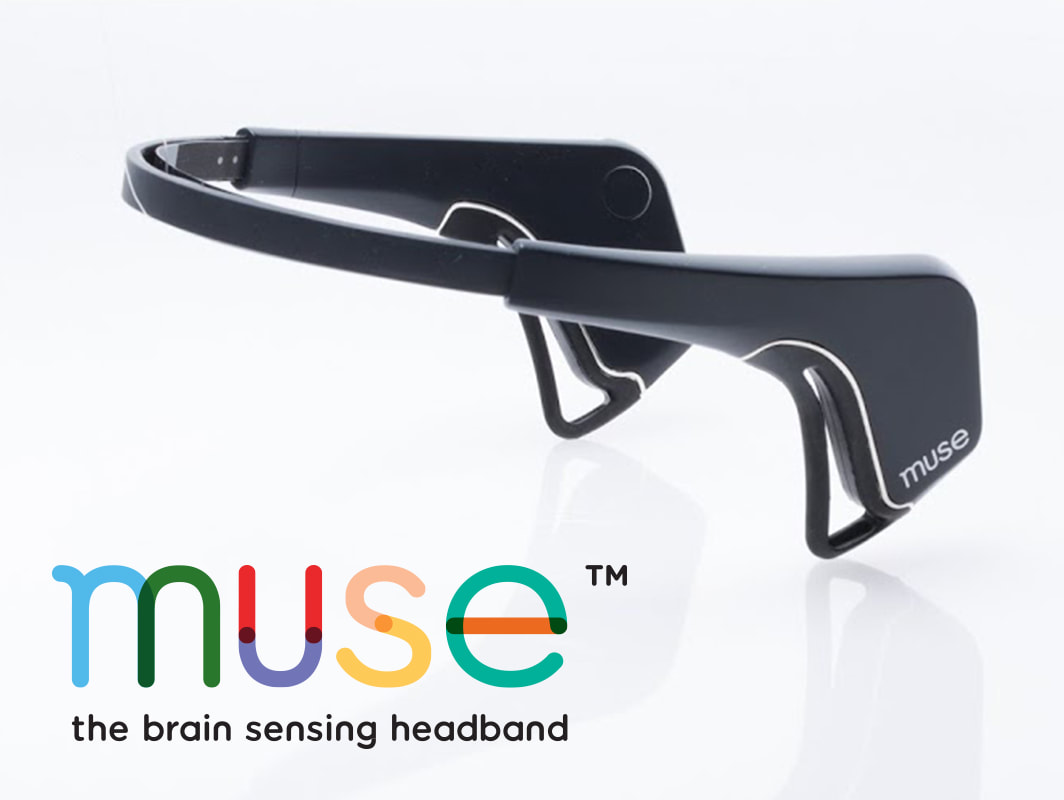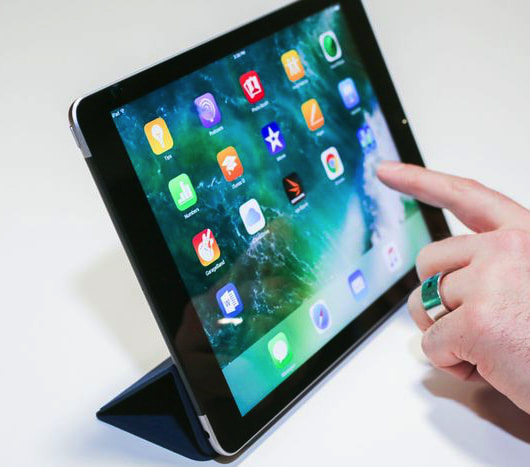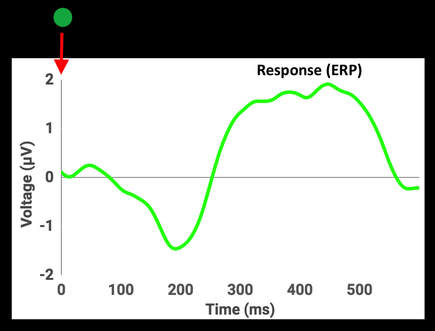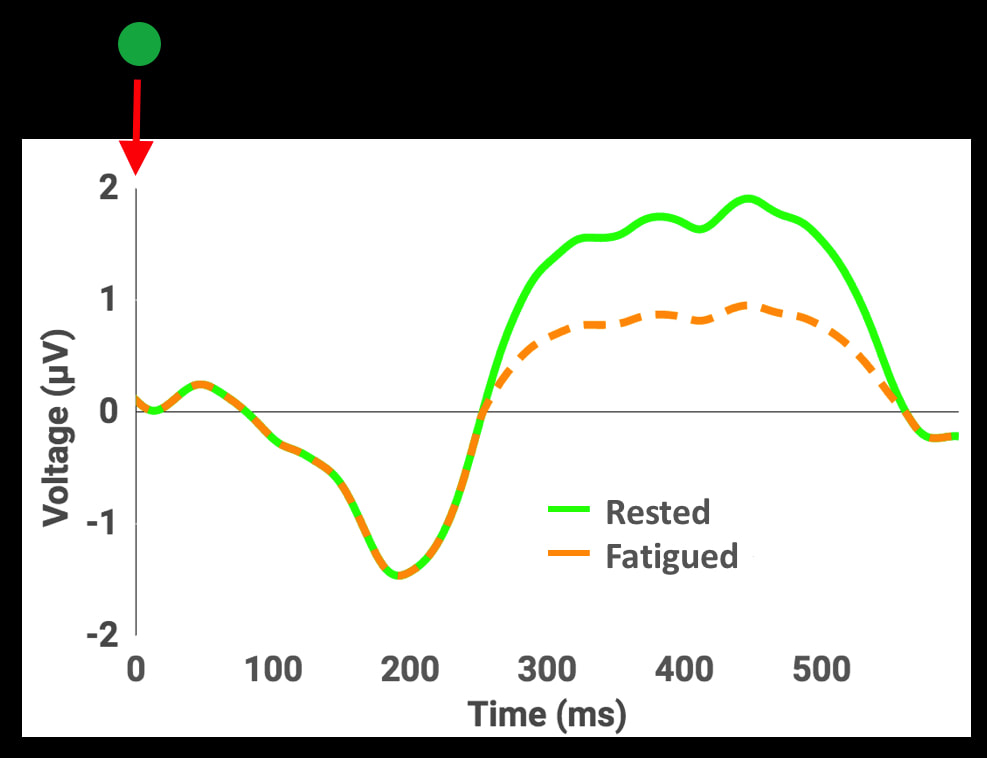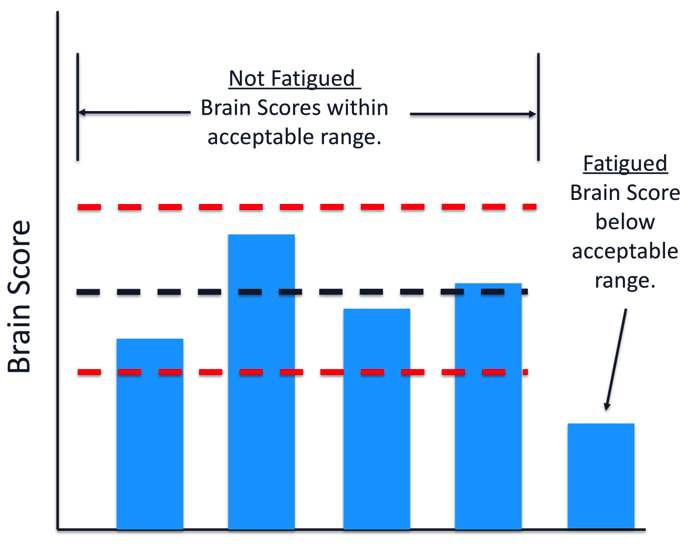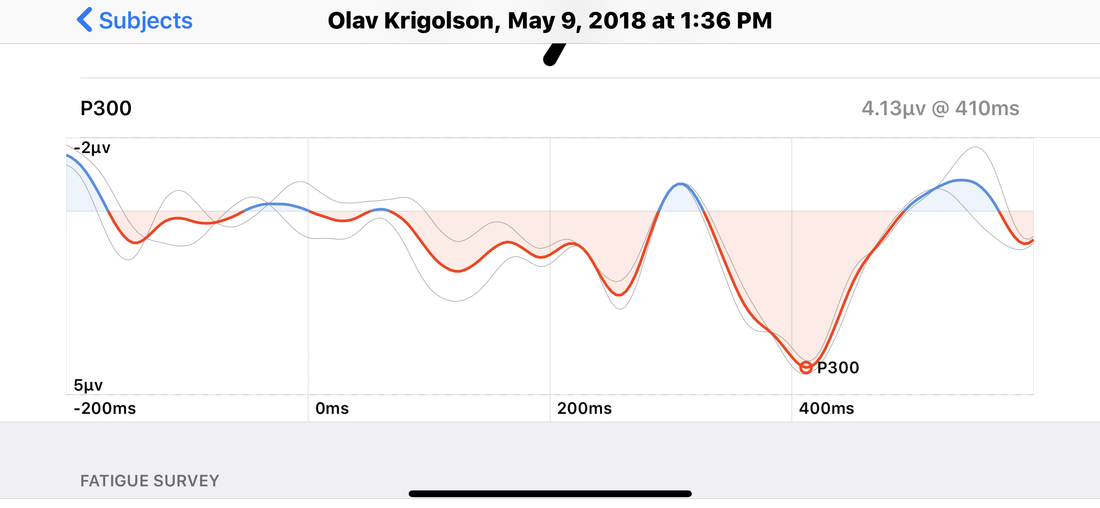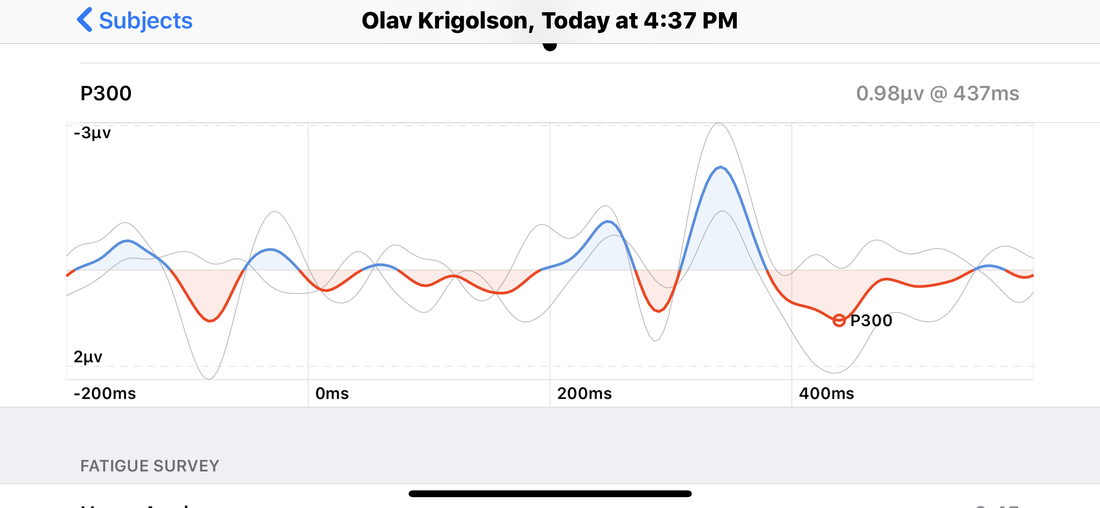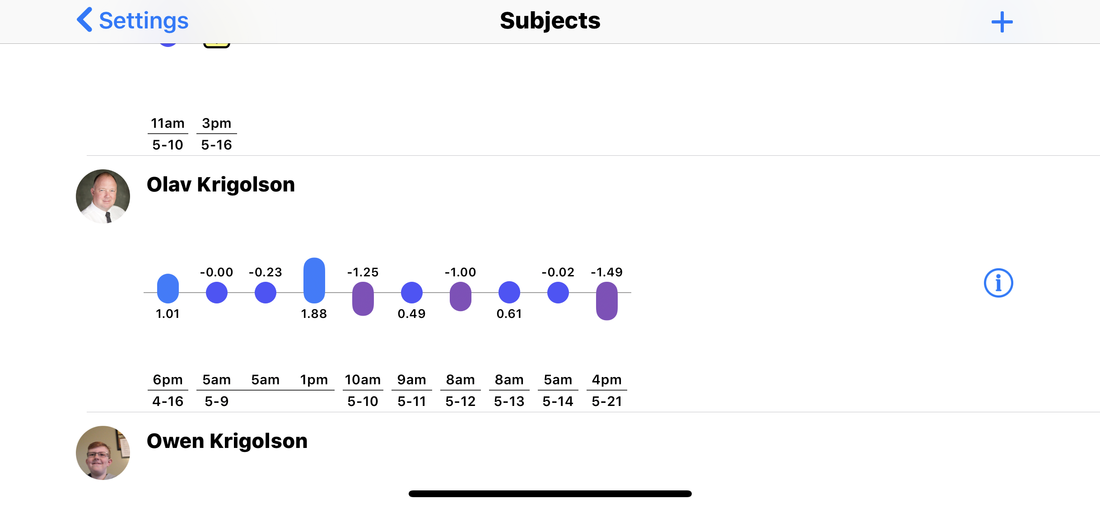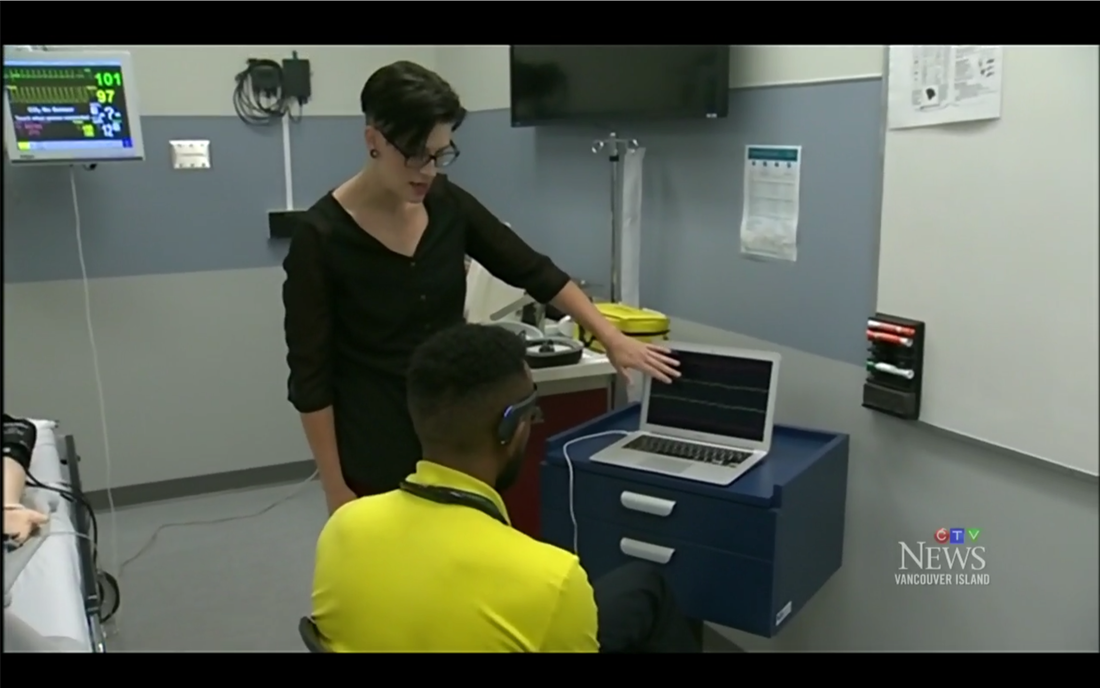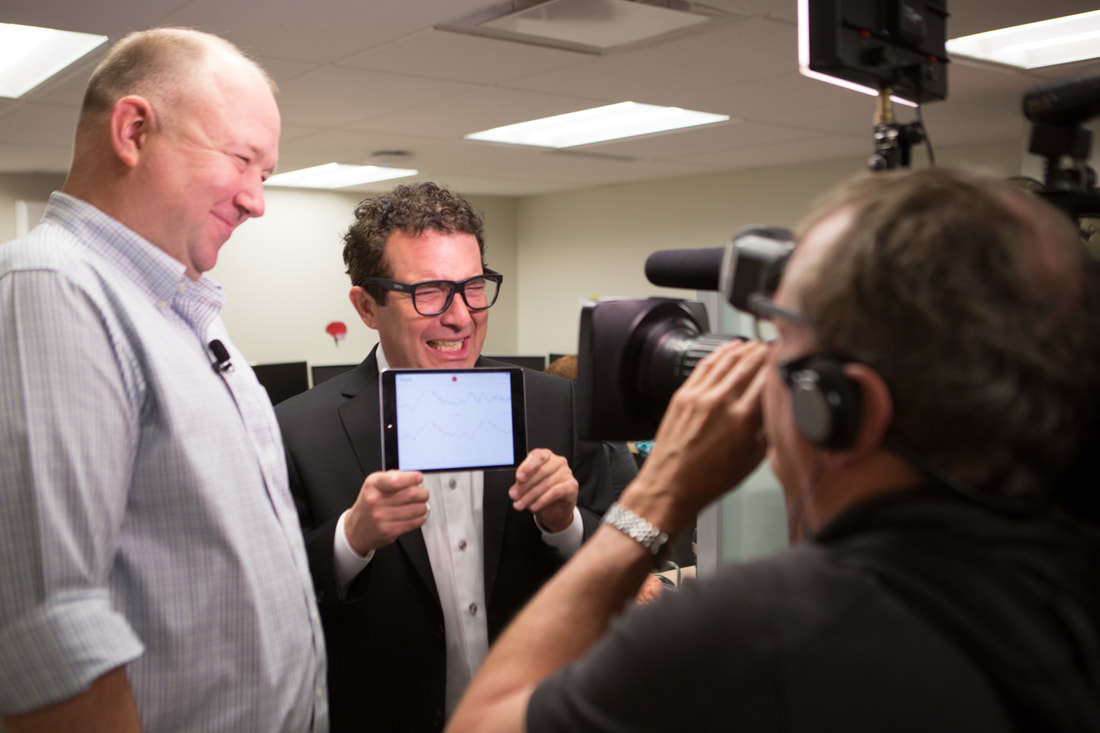Fatigue Research
We utilize EEG ("brain waves") and specifically event-related brain potentials to study cognitive fatigue and its effects on learning and decision-making. Fatigue is a huge issue in a variety of workplace environments-we know people get tired (Ferrara et al. 2001), we know they make more mistakes when they are tired (Barger et al. 2006), and we know that most people are not aware of how tired they are (Sadeghniiat-Haghigi, 2015) . Fatigue related errors can result in injury or death. Our goal is to use the latest neuroscience technology and knowledge to develop a mobile fatigue assessment platform that does not infer fatigue but directly measures how tired you are via changes in brain activity.
How It Works
|
The game is called oddball, people see a series of circles, some green, most blue. The green circles are "targets" and you touch the screen every time you see a green circle. You do nothing when you see blue circles. |
|
|
|
As we said above, while you play the game we record EEG via the MUSE headband - your "brain waves". |
|
So what we do is take a series of P300 measurements and figure out what your brain looks like when it is rested and when it is tired. Once we have built up a profile over a few sessions, we can determine on the spot if you are fatigued or not. The score on the end indicates a P300 amplitude that is smaller than usual - thus the person is fatigued. |
For data collection, we use the PEER application made by SUVA technologies.
We are currently running studies using this technology in mining, hospitals, with the Victoria Harbour Cats baseball team, and in a collaborative project with the NASA HISEAS Mars Habitat in Hawaii.
